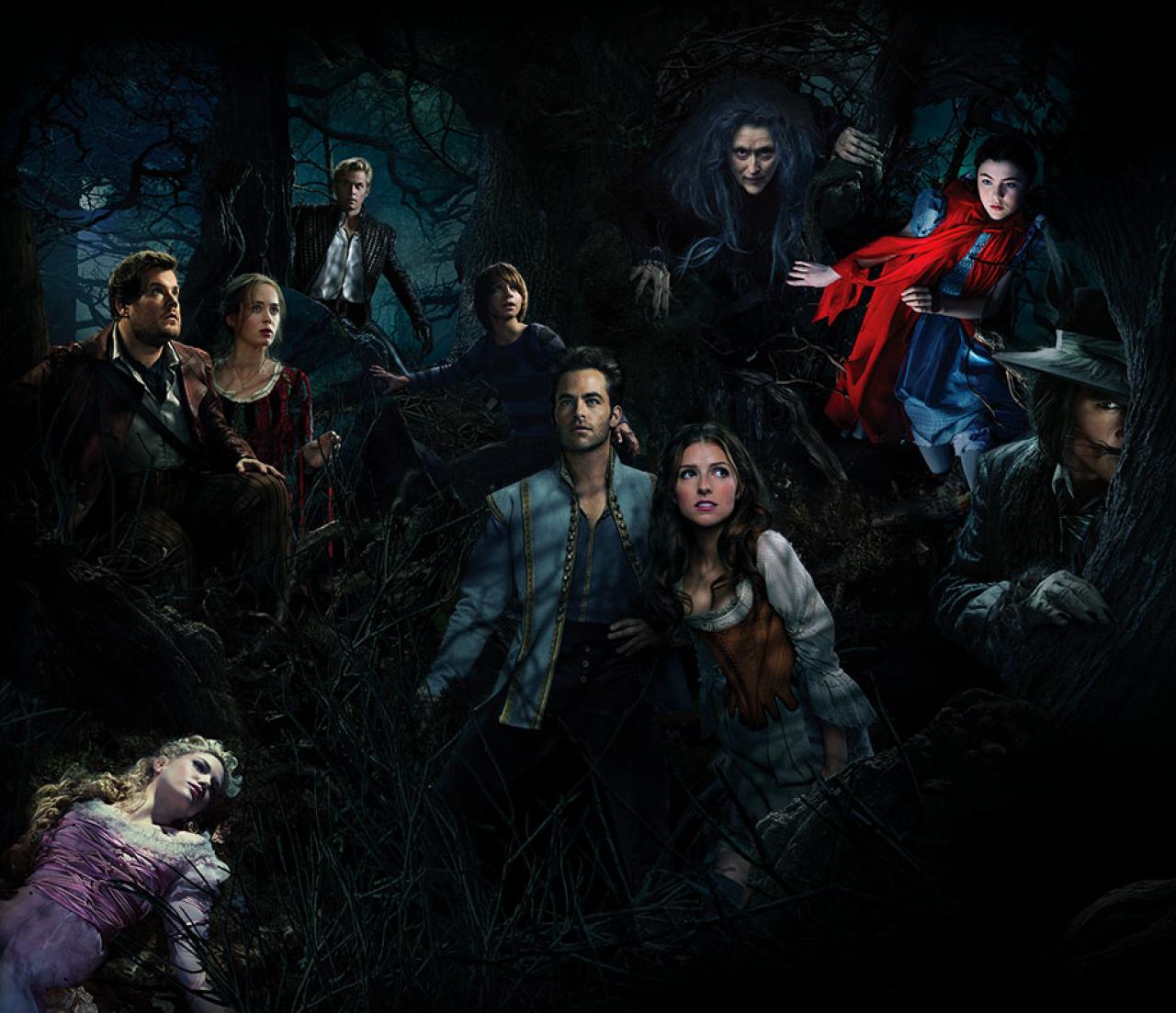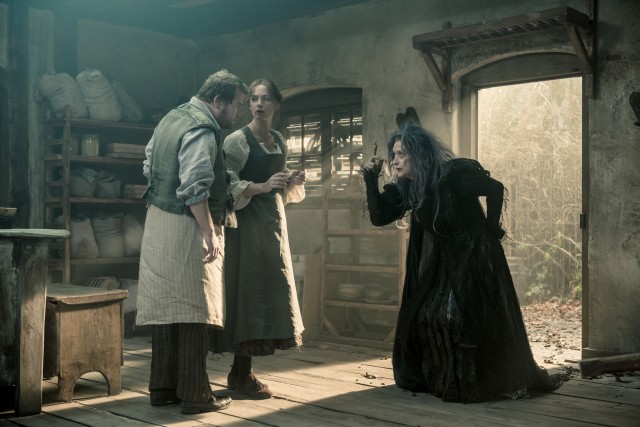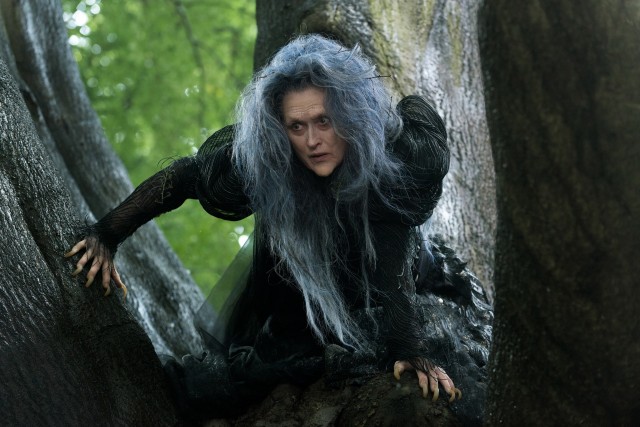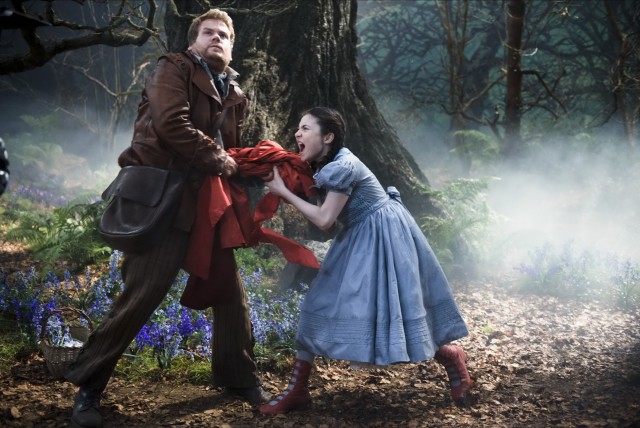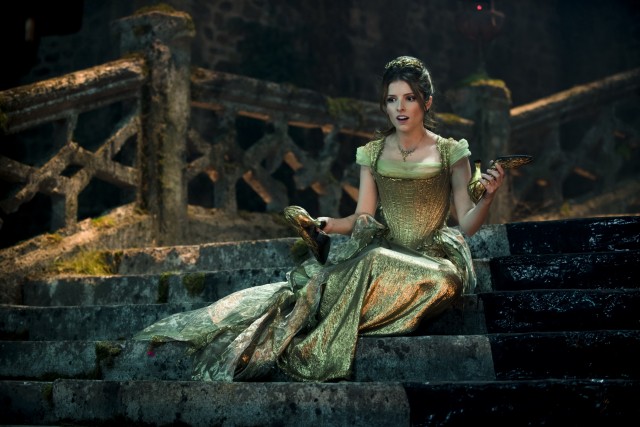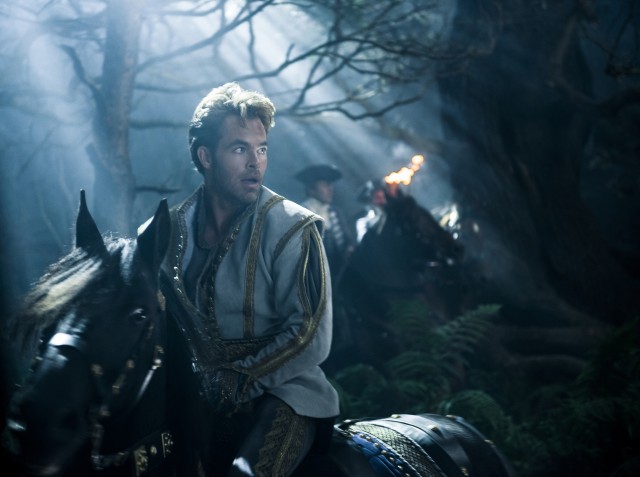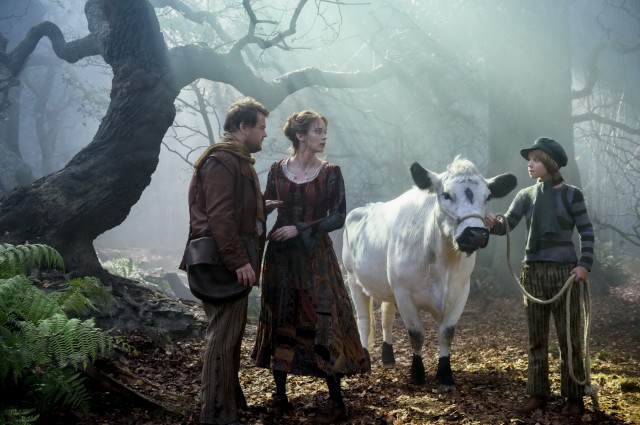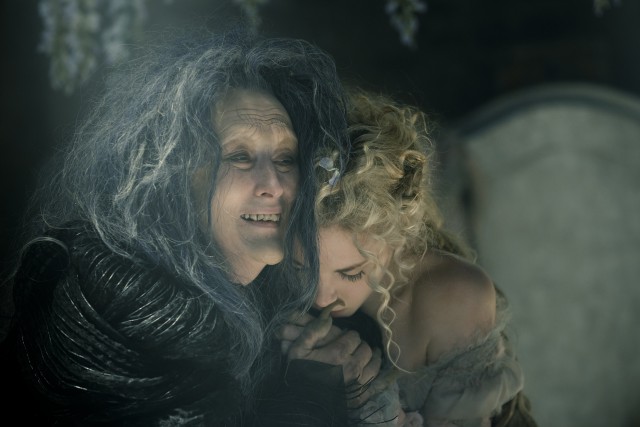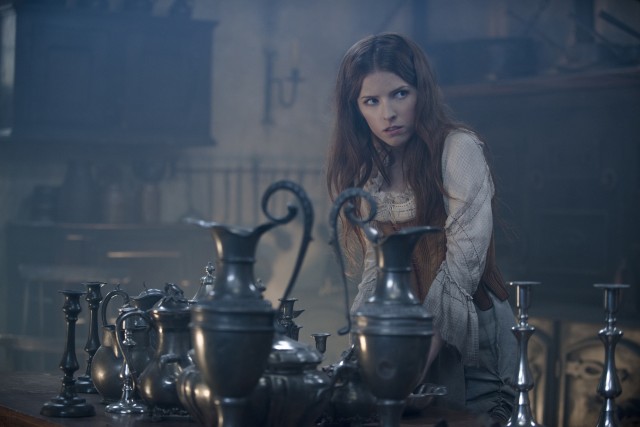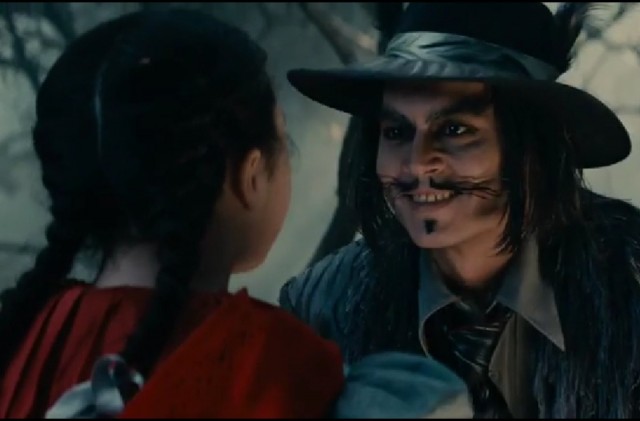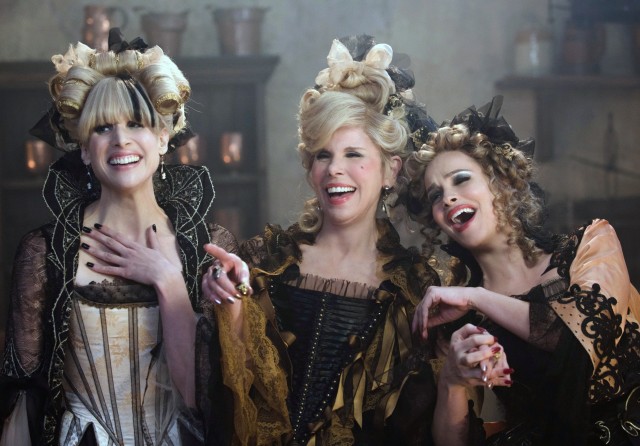Into the Woods is an ambitious adaptation for Disney. Earning their fortune on revised clean-cut fairy tales with family-approved ‘happily ever after’ endings, it would seem that Into the Woods is Disney’s latest attempt to challenge their classic image, standing alongside Maleficent from earlier in 2014 as a darker and more complex take on the studio’s former principles. Fortunately, Into the Woods turned out noticeably better than Maleficent.
Back even ten years ago, Disney never would have touched Into the Woods with a ten-foot pole. Since the original stage musical exploded on Broadway in 1987, after debuting a year earlier, Into the Woods has been one of the key forces popularizing skewed team-ups of the beloved Brothers Grimm fairy tales. Before Once Upon a Time and Shrek made bank on the idea of fairy tale crossovers, Into the Woods had already realized it on the theatrical stage. The production also aggressively challenged the true notion of ‘happily ever after’, being an existentially challenging and often bleak dress-down of fairy tale convention, which makes Disney’s courage with making a movie out of the affair all the more admirable.
It’s no surprise that the original stage musical is superior to the movie, but the movie still turned out better than it had any right to under Disney. Despite some occasional tonal confusion and a sloppier second half in Disney’s movie adaptation, Into the Woods is still a fun and memorable experience for musical enthusiasts, and those who enjoy darker fantasy stories. Its more overt adult content might be a bit objectionable to parents who are hoping to bring their young children, but it’s a fine effort in adapting a challenging musical for a family audience.
Into the Woods primarily centers on two original characters, an unnamed baker and his unnamed wife most of all, played by James Corden and Emily Blunt, respectively. The childless couple are visited by a local witch, played by Meryl Streep, whom they must gather macguffins for in relation to several other fairy tales that are all unfolding in this weird world at the same time.
The supporting cast of Into the Woods is quite expansive, though it’s Corden and Blunt that add the everyman charm to it all. Blunt is a particular highlight as the supportive, but vaguely self-absorbed bakers’ wife, though Corden shoulders the bulk of heroics later in the movie. Complementing them is a vast ensemble cast that includes Anna Kendrick as Cinderella, Chris Pine as her prince, Les Miserables’ Daniel Huttlestone as Jack from Jack and the Beanstalk, Tracey Ullman as Jack’s mother, young stage actress, Lilla Crawford as Little Red Riding Hood, Johnny Depp as the Big Bad Wolf, MacKenzie Mauzy as Rapunzel, and Billy Magnussen as Rapunzel’s prince.
Amidst all of these great performers however, it’s still Meryl Streep that steals the show as the witch, giving the baker and his wife three days to gather items that will allow them to conceive a child. Streep is a magnetic presence with her charming wickedness, often appearing at just the right moments to keep the movie on track with both its plot and its likability. Despite the witch outwardly being a villain in a movie that aims to be dark and subversive, Streep is actually one of the most likable characters in the entire production, which is perhaps yet another way that Into the Woods aims to un-dress what we understand from fairy tales.
With that said, the rest of the cast still performs very well. Anna Kendrick adds a lot of down-to-earth charm to the downtrodden Cinderella, even when she’s forced to inexplicably flee every night due to the waning of her fairy godmother’s spell, while Chris Pine effectively plays a prince that is more scoundrel than hero. Daniel Huttlestone is another charming bright spot in the movie as Jack, while Tracey Ullman is vaguely comical amidst her tendency to smack the boy continually. Lilla Crawford is also a delight as the aggressively naive Little Red Riding Hood, while Johnny Depp provides a great contrast as the predatory Big Bad Wolf.
Depp fans should be advised however that he’s only in the movie for about five minutes. He does have quite a stirring song though, taken from the play, that has overt themes of pedophilia, one of the several bits of Into the Woods that really doesn’t water itself down to cater to children, even though Disney is behind this movie.
The only fairy tale that feels a little more shafted is that of Rapunzel, with Rapunzel and her prince having the least bearing on the plot in the movie adaptation. Their main contributions are one of the witch’s macguffins, and a fun song shared between the two princes about who can out-perform the other in their quest for a woman, which is probably one of the movie’s funniest sequences. Beyond that though, Rapunzel and her prince aren’t good for much unfortunately.
Regardless of what they bring to the story however, every actor is good, and Streep especially ties everything together. The actors bring the same charm of the stage musical to the screen, and their performances still feel worthy of Broadway in the movie adaptation.
Into the Woods delivers a cool and surprisingly effective blend of several fairy tales, though this is where the movie starts to trip up a bit.
The first half of Into the Woods is excellently done, creating a world that expertly has the events of several fairy tales unfold seamlessly and organically, in an interesting world where witches’ curses, giant attacks and royal affairs are all accepted as common occurrences. The way everything is brought together for each initial happy ending is fantastic, and it all comes together for a satisfying false finale.
Then the more ambitious and subversive second half begins, which is the most well-known and important part of the stage play. In the movie adaptation however, the second half of the story, which explores the dark implications of outward happy endings that the fairy tales never explored, feels more convoluted and rushed, a victim of having to try and adapt what was clearly supposed to follow an intermission with the play. It leads to a sense of weird, sloppy pacing that makes the movie feel longer than it is, and it’s here where Into the Woods also experiences the most tonal whiplash between scenes.
The key points of the play’s second half are still captured in the movie, with some of the existential drama intact, and bolstered with a played-up, Disney-approved theme of never having to face disappointment alone. It works to a point, awkward pacing notwithstanding, and it gets enough of the point across to avoid feeling like a bastardization of the play. If nothing else, the heavy charm and polish still exists throughout the story too.
A flaw that the movie surprisingly doesn’t have however is pulling punches in the sometimes harsh second half. With only one or two exceptions, the more violent and bleak moments of the play are actually kept fully intact in Disney’s movie adaptation, even if it sometimes feels like the cleaned-up bits are at odds with the scenes that Disney didn’t touch, with the decisions to reduce the harshness of some scenes made seemingly at random. It sometimes leads to the movie not being sure of exactly what kind of message it’s trying to convey in some places, but like I said, it’s certainly far from a disaster, and fans of the play will appreciate the fact that Disney left most of the second half of the story to be as raw and brutal on film as it was on the stage.
Again, it’s inevitable that the play tells the story better, having more time to work with, and more license to be dark without the Disney label, but Disney has delivered a very faithful and repsectable adaptation of the play in a two-hour movie that is marketed toward family audiences. It may not always be ideal for young children, so parents should exercise caution if they’re concerned about bringing their kids to dark, violent and sometimes overtly sexual movies, but if you can stomach some of the more blunt bits, Into the Woods realizes its story ambition with surprising effectiveness for the most part.
Director, Rob Marshall, best known for 2011’s Pirates of the Caribbean: On Stranger Tides in the Disney catalogue, has had experience directing stage-to-film musical adaptations before. One of them, Chicago turned out brilliantly, though the other, Nine, was more of a misfire.
Marshall gets back into fine form for Into the Woods though, a movie that is directed with incredible amounts of stage-friendly polish. The movie effectively follows the style and tone of the play more often than not, yet still has the same charm that one can reliably expect Disney to deliver in even their most dark and controversial projects. All in all, it’s a well-directed movie with an unenviable task that Marshall mostly seems up to.
The only time that Marshall flounders here and there is in some of the key musical numbers. Given the slightly more constrained runtime of the movie, some songs from the play are inevitably missing, though the ones that are in the movie are generally good picks, especially since the best ones still seem to have made the cut for the jump to the screen. Most of them are great fun, but in a handful of musical numbers, it’s surprising that Marshall doesn’t appear to embrace more of the movie’s Broadway-flavoured vigor.
This leads to several musical sequences, though thankfully not the majority, feeling more inert and phoned in than they should be. Some of the songs are nicely charming and bombastic, but some feel a bit too much like design-by-committee. Perhaps this is where Disney intervened more heavily, to ill effect, but it results in some of the songs feeling noticeably less fun and interesting than the rest, and a chore that the audience just needs to get through to get back to better things.
Fortunately, the weak songs aren’t clustered together, and there are still plenty of moments where Marshall captures the Broadway spectacle well in the movie adaptation.
Being a musical, Into the Woods places a lot of emphasis on its soundtrack. Again, it doesn’t quite measure up to the original Broadway soundtrack, but the movie soundtrack is still quite good overall, with weak songs not being all that common.
Naturally, virtually all of the lead actors in the movie have experience with productions of this nature, and there aren’t any real weak links in the singing. Meryl Streep and Johnny Depp especially excel during their tunes, even given Johnny Depp’s very limited screentime. Emily Blunt and Anna Kendrick are also especially strong, elevating their sequences above the rest with the kind of hearty Broadway punch that serves the movie very effectively.
Again, it’s just a shame that there just isn’t more infectious Broadway energy in the movie adaptation. It’s got enough to get by, but compared to the stage play, it feels like it’s doing some of its big musical sequences halfway. This means that hardcore fans of the play will no doubt see the movie’s soundtrack as a lesser imitation, though the soundtrack CD for the movie is still worth owning if you enjoy it. It’s the songs of the apparent villains that you’ll no doubt keep coming back to most though.
Into the Woods has a pretty modest budget, no doubt to echo the movie’s stage origins. Even despite the smaller funding, the movie manages some effectively potent, dreary atmosphere, making its dark, grungy settings leap off of the screen very effectively.
There’s an air of enchantment amidst the darkness though, and it is very enjoyable to see that the movie has more visual panache to work with than the stage play ever did. The effects are still pretty modest though, and Into the Woods looks downright quaint compared to something like the similarly-toned Maleficent. Some of the play’s more budget-constrained moments look pretty dodgy when rendered on film, but the movie still overall achieves a greater sense of visual polish than the constraints of the play.
Into the Woods is a movie that was somewhat doomed from the start to never compare to the stage play that inspired it, but as a movie, the story still works on most levels, and the experience is still well worth enjoying for fans of musicals and dark fantasy stories alike. The movie doesn’t pull punches with the play’s subject matter though, at least not in most places, so parents should definitely exercise caution if they plan to bring their very young children to it.
If you’re a die-hard fan of the play, then the movie adaptation is a worthy one, but don’t expect it to out-perform the source material. While the movie does add some upgraded visual style and plenty of awesome performances, the musical direction and sense of energy is a bit diluted in the movie in contrast to the play. It makes the movie a bit less fun to watch than the play, and the constrained second half’s wonky pacing is very difficult to ignore for fans of the play especially.
All in all though, Into the Woods is a movie that is ultimately successful, despite it flying in the face of so many movies that Disney built itself upon for decades. It’s progressive, even if not perfect, and makes for another great way to deliver a more mature take on bedtime stories.

